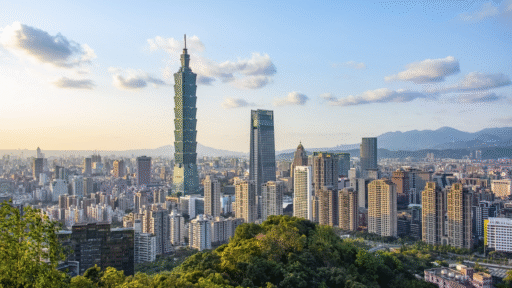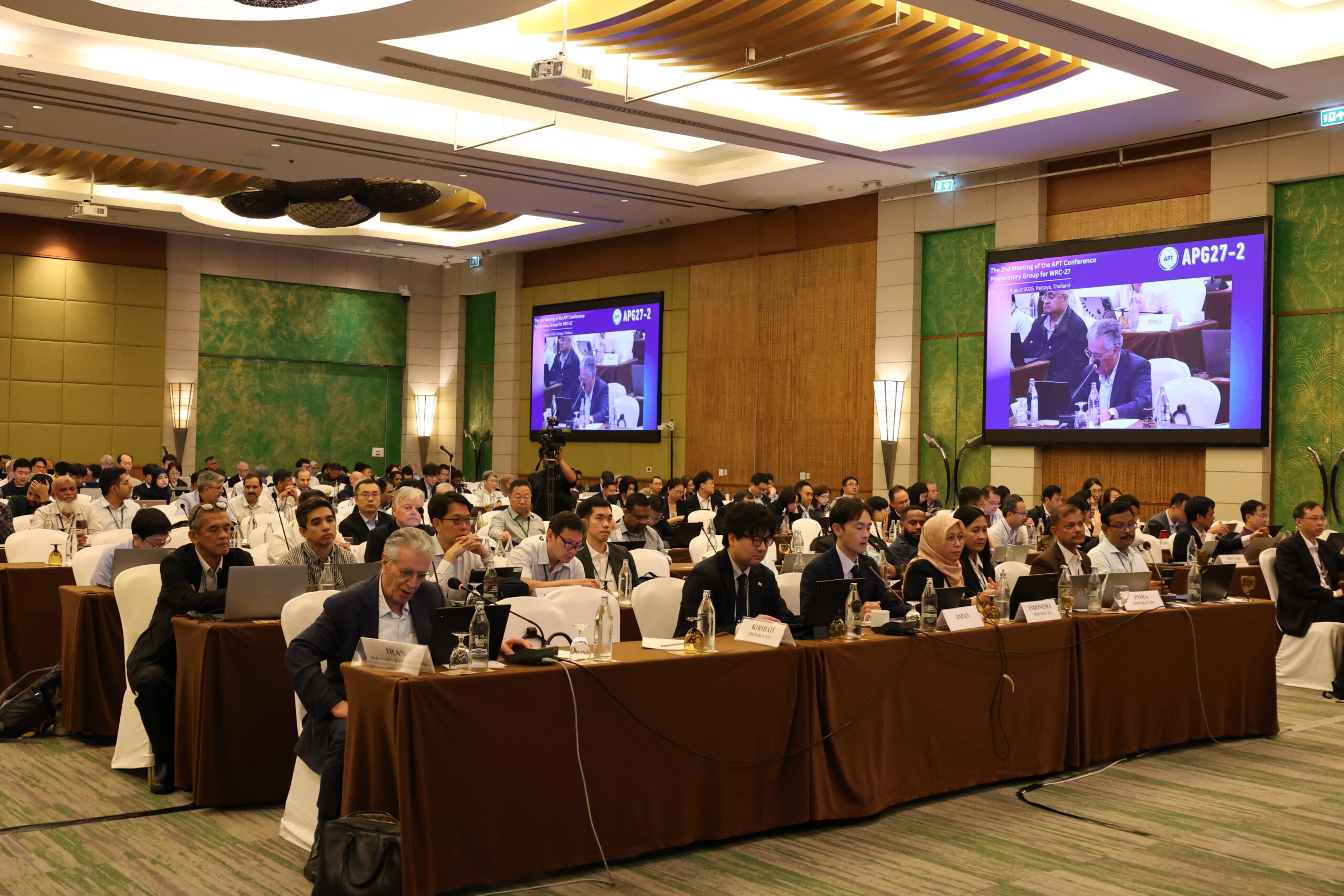APG27-2 outcomes: Asia-Pacific roadmap to WRC-27
Over 700 government officials, engineers, and industry delegates gathered in Pattaya, Thailand last week for the APG27-2 meeting, a key milestone in the Asia-Pacific region’s preparation for the World Radiocommunication Conference 2027 (WRC-27). Held from 28 July to 1 August, the meeting was hosted by the Asia-Pacific Telecommunity (APT) and aimed to develop regional positions on complex technical and regulatory issues dealing with the use of the radio-frequency spectrum and satellite orbits. The discussions focused especially on space services, including fixed satellite, mobile-satellite and scientific services, which are the main subjects of the next WRC-27.
Key APG27-2 discussions driving WRC-27 preparation
The meeting focused on reviewing and refining APT preliminary views on several WRC-27 agenda items. Particular attention was given to those related to future satellite operations and the advancement of emerging technologies. Discussions emphasised the importance of preventing harmful interference between services and underscored the need for administrations to fully adhere to ITU regulations. The conversations focused on ensuring the protection of existing primary allocations in the frequency bands under study by the ITU when considering possible new allocation to existing services.
On the topic of new technologies, APT members engaged in detailed discussions on the potential of direct-to-device (D2D) systems to enhance mobile connectivity, particularly in underserved and remote regions. These systems would pair Mobile-Satellite Service (MSS) capabilities with International Mobile Telecommunications (IMT) technologies. Although participants welcomed the potential benefits, they voiced strong concerns about the challenges associated with the coexistence of satellite systems and terrestrial IMT networks, in particular related to cross-border operations.
Several administrations stressed the importance of protecting existing IMT deployments – reflecting the significant investments already made in terrestrial networks – particularly in the 2010–2025 MHz and 2120–2170 MHz bands. They called for clear protection criteria to ensure harmonious spectrum use.
The discussion also revealed several regulatory uncertainties surrounding D2D: clear definitions are still lacking, operator responsibilities remain undefined, and national administrations have yet to determine how they will authorise and monitor hybrid MSS/IMT systems.
The meeting also addressed studies under Agenda Item 1.7, which looks at potential IMT use in several bands, including the 7.125–8.4 GHz range used extensively for Earth observation, meteorological, and other satellite services. Members underscored the need to protect these incumbent uses while assessing possibilities for spectrum sharing.
Broad agreement and diverging approaches on APG27-2 spectrum agenda
Member states reached a consensus on the importance of technical studies and protecting incumbent services, however they differed on how far new regulations should go. Most supported continuing ITU-R studies, but key divisions emerged over whether new resolutions are needed, or existing rules suffice.
Countries also debated how to coordinate overlapping agenda items (e.g., 1.12, 1.13, 1.14), given the interest in using some frequency bands for D2D, low data rate MSS, and new MSS allocations. How well nations coordinate and agree on the use of these bands will shape their next steps – and their positions on whether the spectrum can be shared without harmful interference. Because spectrum needs differ by region, aligning study groups and protection criteria will stay a top priority at future meetings.
Asia-Pacific regulators working to forge a united spectrum front ahead of WRC-27
The APG27-2 discussions reinforced the Asia-Pacific’s dual priorities: advancing innovative satellite technologies while safeguarding public, scientific, and commercial services. Delegates from across the region demonstrated a strong commitment to forging a cohesive regional position ahead of WRC-27, recognising that unity is essential to ensuring that region’s interests are effectively represented on the global stage.
Participants highlighted the importance of a coordinated approach to address emerging challenges, such as the integration of new satellite-based services, growing spectrum demands from next-generation mobile networks, and the need to preserve spectrum for critical applications. There was broad agreement that promoting innovation must be balanced with the imperative to prevent harmful interference and ensure regulatory certainty.
By working collaboratively to develop harmonised views on complex agenda items, Asia-Pacific administrations are not only strengthening regional influence within the ITU framework, but also reinforcing shared values of responsible spectrum management, equitable access, and long-term sustainability. This collective effort signals a proactive and pragmatic stance as the region prepares for the pivotal decisions to be made at WRC-27.
Next steps on the APG27-2 to WRC-27 timeline
With preliminary positions taking shape, attention now turns to the next phase of regional coordination:
- The first Inter-Regional Information Session (IRIS), scheduled for December 2025 in Geneva, will allow APT to exchange views with other regional groups.
- Further preparatory meetings: APG27-3 in 2026, APG27-4, and APG27-5, both in 2027, will finalise regional proposals before the WRC-27 conference.
For now, the APG27-2 meeting in Pattaya, Thailand has set the stage for a complex but constructive path forward as the region seeks to balance technological innovation, spectrum sharing, and service protection.
Next year, administrations are expected to focus more closely on their priority agenda items; present technical studies that demonstrate the feasibility of sharing spectrum between existing and new services; set technical parameters to protect existing services; and draft proposals for inclusion in the Conference Preparatory Meeting report.
At Access Partnership, our strong network across APEC, spanning both the public and private sectors, enables us to drive policy innovation and shape emerging spectrum regulations. If your organisation is navigating the evolving spectrum regulatory landscape, we’d welcome the opportunity to connect and explore how we can support your objectives. Please reach out Xochitl Hernandez at [email protected], Hamza Hameed at [email protected], or Jesus Rivera at [email protected].
Photo credit: Asia-Pacific Telecommunity.
Authors










